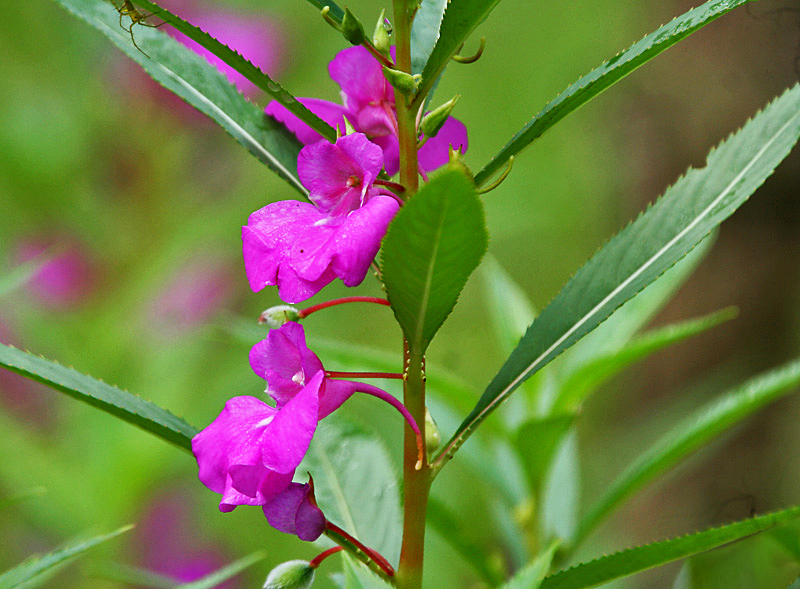|
Acrotriche Lancifolia
''Acrotriche lancifolia'' is a species of flowering plant in the family Ericaceae and is endemic to the south-west of Western Australia. It is an erect, widely branching shrub, with usually narrowly egg-shaped, sharply-pointed leaves, green or yellowish-green, tube-shaped flowers, and flattened spherical drupes. Description ''Acrotriche lancifolia'' is an erect, widely branched shrub that typically grows up to high and wide. The leaves are usually narrowly egg-shaped, sharply-pointed, long and wide on a petiole long. The flowers are arranged in groups of 4 to 9 in leaf axils with bracts and bracteoles long, the sepals long. The petals are green or greenish-yellow, and joined at the base forming a cylindrical tube and wide, with widely spreading lobes long and wide. Flowering mainly occurs from July to September, and the fruit is a spherical drupe long and wide. Taxonomy ''Acrotriche lancifolia'' was first formally described in 2007 by Michael Clyde Hislop in the jour ... [...More Info...] [...Related Items...] OR: [Wikipedia] [Google] [Baidu] |
Michael Clyde Hislop
Michael Clyde Hislop (born 1955) is an Australian botanist based in Perth at the Western Australian Herbarium. Career Hislop specialises in the curation, identification and taxonomy of plants, particularly the genus '' Styphelia'' which he recircumscribed with two other researchers. He has also helped to identify and name numerous species found in the Pilbara The Pilbara () is a large, dry, sparsely populated regions of Western Australia, region in the north of Western Australia. It is known for its Indigenous Australians, Aboriginal people; wealth disparity; its ancient landscapes; the prevailing r ..., Goldfields and South-West of Western Australia. '' Grevillea hislopii'' was named in his honour. References Living people Botany in Western Australia Scientists from Perth, Western Australia 1955 births {{WesternAustralia-stub ... [...More Info...] [...Related Items...] OR: [Wikipedia] [Google] [Baidu] |
Ericales Of Australia
The Ericales are a large and diverse order of flowering plants in the asterid group of the eudicots. Well-known and economically important members of this order include tea and ornamental camellias, persimmon, ebony, blueberry, cranberry, lingonberry, huckleberry, kiwifruit, Brazil nut, argan, sapote, azaleas and rhododendrons, heather, heath, impatiens, phlox, Jacob's ladder, primroses, cyclamens, shea, sapodilla, pouterias, and trumpet pitchers. The order includes 22 families, according to the APG IV system of classification. The Ericales include trees, bushes, lianas, and herbaceous plants. Together with ordinary autophytic plants, they include chlorophyll-deficient mycoheterotrophic plants (e.g., '' Sarcodes sanguinea'') and carnivorous plants (e.g., genus '' Sarracenia''). Mycorrhizal associations are quite common among the order representatives, and three kinds of mycorrhiza are found exclusively among Ericales (namely, ericoid, arbutoid and monotropoid myco ... [...More Info...] [...Related Items...] OR: [Wikipedia] [Google] [Baidu] |
Acrotriche
''Acrotriche'' is a genus of about 18 species of flowering plants in the family Ericaceae, occurring in all states of Australia except the Northern Territory. Plants in the genus ''Acrotriche'' are shrubs with hairy branchlets, leaves with more or less parallel veins and small flowers with 5 sepals and petals joined at the base to form a bell-shaped to cylindrical tube with hairs and stamens in the throat. Description Plants in the genus ''Acrotriche'' are shrubs with branchlets with fine, soft or downy hairs, and leaves with short petioles and more or less parallel veins and a lighter shade of green on the lower surface. The flowers are small and bisexual, sessile or on a short spike in leaf axils with a bract and 2 bracteoles below the 5 sepals. The bracts, bracteoles and sepals are egg-shaped to almost round. The 5 petals are joined at the base to form a bell-shaped or cylindrical tube with 5 tufts of hair in the throat and the tube filled with nectar. The petal lobes are ... [...More Info...] [...Related Items...] OR: [Wikipedia] [Google] [Baidu] |
Department Of Biodiversity, Conservation And Attractions (Western Australia)
The Department of Biodiversity, Conservation and Attractions (DBCA) is the Government of Western Australia, Western Australian government department responsible for managing lands and waters described in the ''Conservation and Land Management Act 1984'', the ''Rottnest Island Authority Act 1987'', the ''Swan and Canning Rivers Management Act 2006'', the ''Botanic Gardens and Parks Authority Act 1998'', and the ''Zoological Parks Authority Act 2001'', and implementing the state's conservation and environment legislation and regulations. The Department reports to the Minister for Environment and the Minister for Tourism. DBCA was formed on 1 July 2017 by the merger of the Department of Parks and Wildlife (DPaW), the Botanic Gardens and Parks Authority, the Zoological Parks Authority and the Rottnest Island Authority. The former DPaW became the Parks and Wildlife Service. Status Parks and Wildlife Service The Formerly Department of Parks and Wildlife. the Parks and Wildlife Servi ... [...More Info...] [...Related Items...] OR: [Wikipedia] [Google] [Baidu] |
